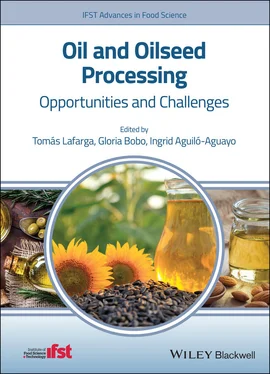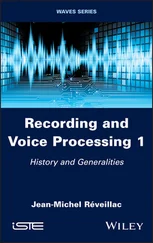1 Cover
2 Series Page About the IFST Advances in Food Science Book Series The Institute of Food Science and Technology (IFST) is the leading qualifying body for food professionals in Europe and the only professional organization in the UK concerned with all aspects of food science and technology. Its qualifications are internationally recognized as a sign of proficiency and integrity in the industry. Competence, integrity, and serving the public benefit lie at the heart of the IFST philosophy. IFST values the many elements that contribute to the efficient and responsible supply, manufacture, and distribution of safe, wholesome, nutritious, and affordable foods, with due regard for the environment, animal welfare, and the rights of consumers. IFST Advances in Food Science is a series of books dedicated to the most important and popular topics in food science and technology, highlighting major developments across all sectors of the global food industry. Each volume is a detailed and in‐depth edited work, featuring contributions by recognized international experts, and which focuses on new developments in the field. Taken together, the series forms a comprehensive library of the latest food science research and practice, and provides valuable insights into the food processing techniques that are essential to the understanding and development of this rapidly evolving industry. The IFST Advances series is edited by Dr. Brijesh Tiwari, who is Senior Research Officer at Teagasc Food Research Centre in Ireland. Forthcoming titles in the IFST series Recent Advances in Micro‐ and Macroalgal Processing: Food and Health Perspectives edited by Gaurav Rajauria and Yvonne V. Yuan.
3 Title Page Oil and Oilseed Processing Opportunities and Challenges Edited by Tomás Lafarga University of Almería, Almería Spain Gloria Bobo IRTA, Lleida Spain Ingrid Aguiló‐Aguayo IRTA, Lleida Spain
4 Copyright Page
5 Preface
6 List of Contributors
7 1 Production and Consumption of Oils and Oilseeds 1.1 Introduction 1.2 Oilseeds and Oils: Production and Trade 1.3 Novel Sources for Oil Production 1.4 Summary Acknowledgments References
8 2 Conventional Oils and Oilseeds: Composition and Nutritional Importance 2.1 Introduction 2.2 Oilseeds 2.3 Factors Affecting Oil Yield 2.4 Overview of Oilseed Processing and Current Applications Acknowledgments References
9 3 Novel Sources for Oil Production 3.1 Introduction 3.2 Algae 3.3 Insects 3.4 Unconventional Plants and Seeds 3.5 Opportunities, Challenges, and Future Prospects Acknowledgements References
10 4 Oils Extracted from Nuts and Grains 4.1 Introduction 4.2 Oils 4.3 Nut Lipids 4.4 Grain Lipids 4.5 Conclusions References
11 5 New Approaches to Detect Compositional Shifts in Fish Oils 5.1 Introduction 5.2 Production and Processing 5.3 Nutritional Benefits 5.4 Oxidative Stability 5.5 Methods for Quality Assessment 5.6 Conventional Methods 5.7 Machine Learning Approaches toward the Detection of Compositional Shifts 5.8 Future Perspectives References
12 6 Milk Fats 6.1 Introduction 6.2 Health Effects of Milk Fats 6.3 Pre‐Treatment and Processing Technologies 6.4 Techniques for Obtaining Functionality of Milk Fats 6.5 Current and Potential Applications in the Food Industry and Other Areas 6.6 Non‐food Uses of Milk Fats 6.7 Future Trends References
13 7 Oils and Their Use Beyond the Food Industry 7.1 Introduction 7.2 Seed Oils for Non‐food and Industrial Applications 7.3 Industrial Applications of Seed Oils 7.4 Conclusions and Future Prospects References
14 8 Occurrence and Determination of Contaminants in Edible Oils and Oilseeds 8.1 Introduction 8.2 Mycotoxins 8.3 Polycyclic Aromatic Hydrocarbons 8.4 3‐MCPD Esters and Glycidyl Esters 8.5 Mineral Oil 8.6 Phthalates 8.7 Pesticides 8.8 Conclusions Acknowledgments References
15 9 By‐Products from Oilseed Processing and Their Potential Applications 9.1 Introduction 9.2 Oilseed by‐Products: Origin, Characteristics, and Composition 9.3 Nutritional Composition and Functional Properties of Oilseed by‐Products 9.4 Antinutritional Compounds 9.5 Current Applications in the Valorization of Oilseed by‐Products 9.6 Future Trends References
16 10 Proteins and Peptides Derived from Rapeseed: Techno-Functional and Bioactive Properties 10.1 Introduction 10.2 Summary of Existing Rapeseed Meal Protein Extraction Processes 10.3 Hydrolysis of Rapeseed Proteins and Rapeseed Meal to Produce High Value Bioactive Compounds 10.4 Techno‐Functional Attributes of Rapeseed Proteins 10.5 Bioactivities of Rapeseed Protein Hydrolysates and Identified Bioactive Peptides 10.6 Safety of Rapeseed Proteins and Hydrolysates 10.7 Conclusion References
17 11 Oils and Oilseeds in the Nutraceutical and Functional Food Industries 11.1 Introduction 11.2 Functional Food and Nutraceuticals 11.3 Vegetable and Seed Oils as Source of Bioactive Compounds 11.4 Bioactivity of Vegetable Oils and Oilseeds 11.5 New Trends and Applications References
18 12 Sensorial Evaluation and Aroma of Vegetable Oils 12.1 Introduction 12.2 Olive Oil 12.3 Palm Oil 12.4 Soybean Oil 12.5 Sun Flower Seed Oil 12.6 Corn Oil 12.7 Peanut Oil 12.8 Coconut Oil 12.9 Linseed/Flaxseed Oil 12.10 Canola or Rapeseed 12.11 Hazelnut Oil 12.12 Avocado Oil 12.13 Almond Oil 12.14 Pistachio Oil 12.15 Sesame Oil 12.16 Walnut Oil References
19 Index
20 End User License Agreement
1 Chapter 1 Table 1.1 Foods manufactured using vegetable (and microalgal) oils.
2 Chapter 2 Table 2.1 Some physical characteristics of conventional oilseed oils. Table 2.2 Composition table from Food Data Central form USDA (values per 100 ... Table 2.3 Composition of main fatty acids from oilseed oils.
3 Chapter 3 Table 3.1 Fatty acid composition of different microalgal species. Source: Com... Table 3.2 Summary of conventional and innovative technologies and extraction ... Table 3.3 Relative fatty acid contents (%) of selected macroalgae analyzed by...
4 Chapter 4Table 4.1 Total lipid content (%) of nuts. Source: Miraliakbari and Shahidi (...Table 4.2 Composition of major lipid classes – triacylglycerols, sterols, pho...Table 4.3 Composition of four major fatty acids – palmitic (C16:0), oleic (C1...Table 4.4 Composition of two major sterols (β‐sitosterol and campesterol) and...Table 4.5 Composition of the three main lipid classes – neutral lipids, phosp...Table 4.6 Composition of four major fatty acids – palmitic (C16:0), oleic (C1...Table 4.7 Composition of two major sterols (β‐sitosterol and campesterol) and...
5 Chapter 6Table 6.1 Fat content of milks from domestic species.Table 6.2 Lipids present in milk.Table 6.3 Functional properties of milk fats.
6 Chapter 7Table 7.1 Fatty acid composition of selected feedstocks used to prepare bioba...Table 7.2 Commercially available non‐food polymeric products from industrial ...Table 7.3 Significant properties of bio‐based lubricants for various applicat...Table 7.4 Industrial bio‐plasticizers made from vegetable oils. a
7 Chapter 8Table 8.1 Analytical methods for the determination of mycotoxins.Table 8.2 Analytical methods for the determination of PAHs. aTable 8.3 Analytical methods for the determination of 3‐MCPDs and glycidyl es...Table 8.4 Analytical methods for the determination of mineral oil hydrocarbon...Table 8.5 Analytical methods for the determination of phthalates. aTable 8.6 Analytical methods for the determination of pesticides. a
8 Chapter 9Table 9.1 Composition of oilseeds’ by‐products and their main uses.
9 Chapter 10Table 10.1 Application of rapeseed protein isolates or concentrates in foods.Table 10.2 Bioactive peptides derived from rapeseed proteins.Table 10.3 Safety of rapeseed protein products in animal trials.
Читать дальше












